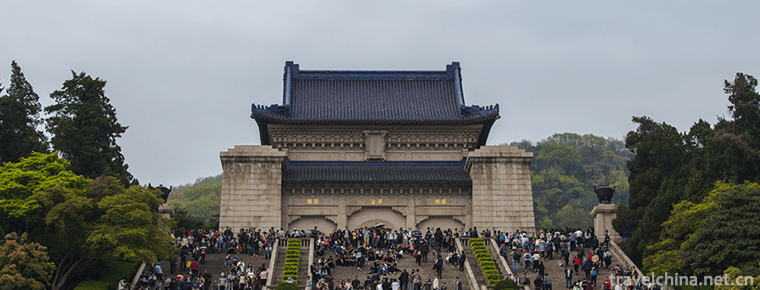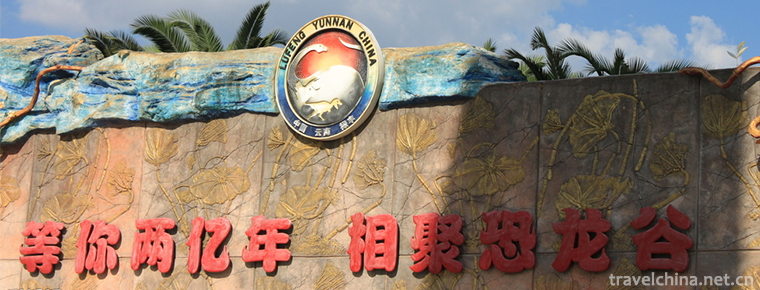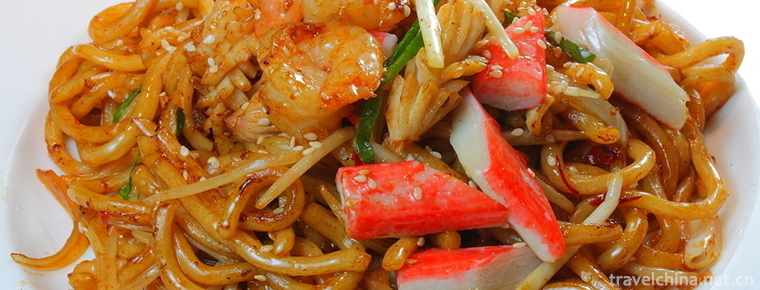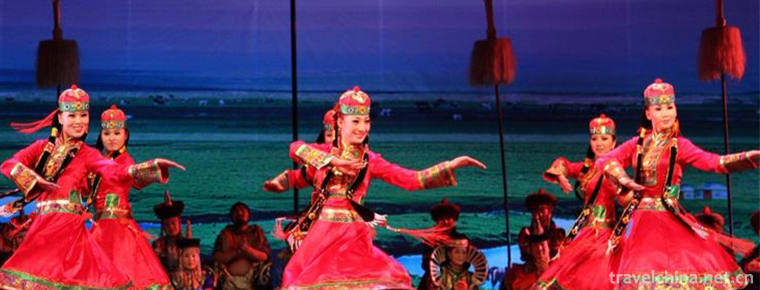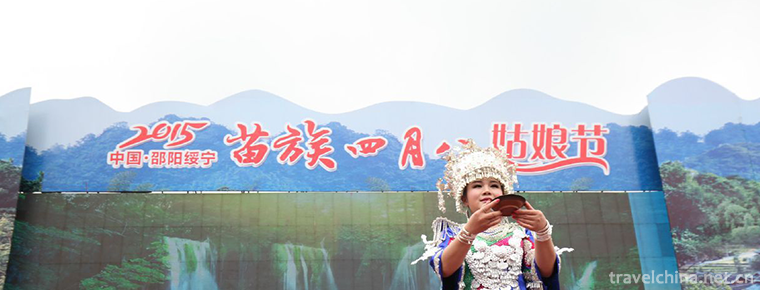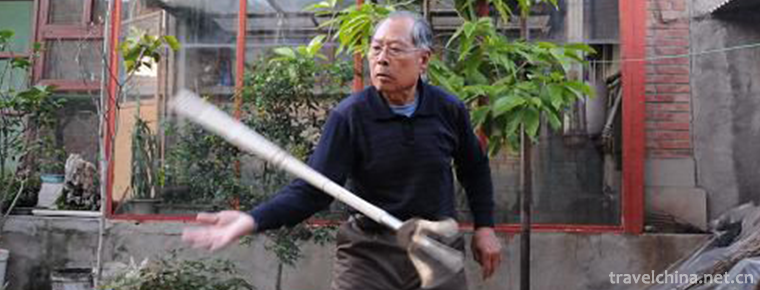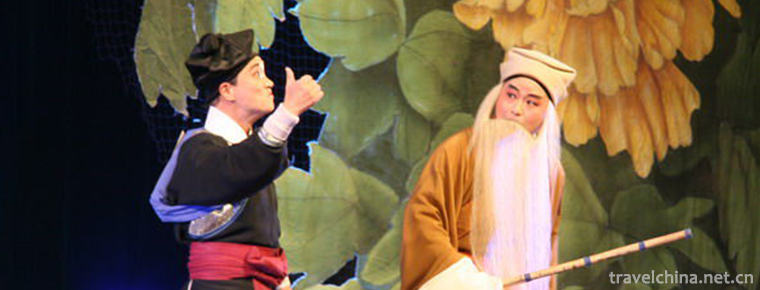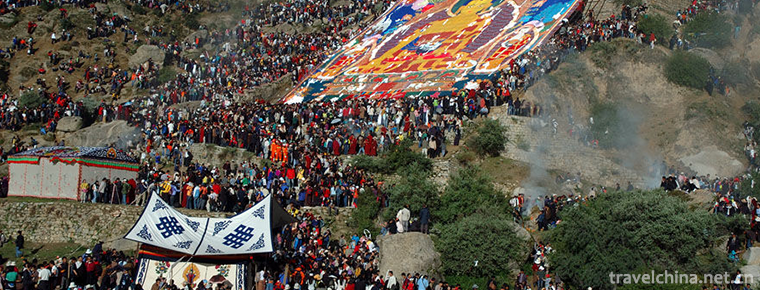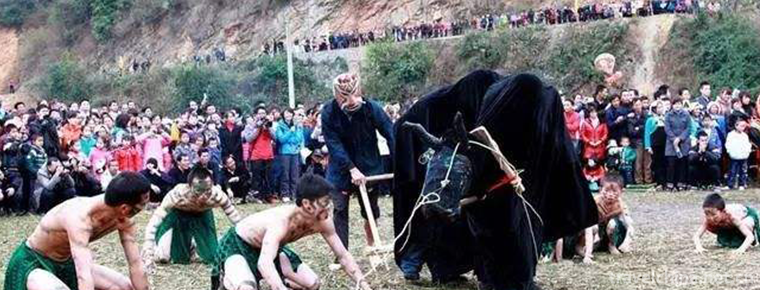Beijing
Beijing, referred to as "Beijing" for short, is the capital of the People's Republic of China, the municipality directly under the Central Government, the central city of the country, mega-cities, international metropolises, national political center, cultural center, international communication center, scientific and technological innovation center, the Central Committee of the Communist Party of China, the Central People's Government of the People's Republic of China, and the people of the whole country. The Congress, the National Committee of the Chinese People's Political Consultative Conference and the Central Military Commission of the People's Republic of China are also the places where the Central War Area Command is stationed.

Beijing is located in the north of the North China Plain, backed by Yanshan, adjacent to Tianjin and Hebei. The climate in Beijing is a typical semi humid continental monsoon climate in the north temperate zone.

Beijing is the first batch of national historical and cultural cities and the world's largest number of world cultural heritage cities, more than 3000 years of history has bred the Palace Museum, Temple of Heaven, the Badaling Great Wall, the Summer Palace and many other places of historic interest. As early as seven hundred thousand years ago, there was a primitive population tribe "Beijing people" in Zhoukoudian, Beijing. In the 1045 B.C., Beijing became the capital of the kingdoms of thistles and swallows. Since 938 AD, Beijing has become the capital of Liao, Jinzhong, Yuandu, Ming, Qing Dynasties, and Beiyang Government of the Republic of China. On October 1, 1949, Beijing has become the capital of the People's Republic of China.

Beijing is named the world's first tier city by GaWC, the global authority. The United Nations report points out that Beijing's human development index ranks second in China's cities. In 2017, Beijing's per capita disposable income reached 57,230 yuan, with the total household deposits and per capita household deposits ranking first in the country. In 2017, Beijing's high-tech enterprises reached 20183, ranking the first in the country. Beijing ranked third in Forbes's list of the best commercial cities in mainland China in 2017.

On July 31, 2015, President Bach of the International Olympic Committee announced that Beijing, together with Zhangjiakou, had won the right to host the 2022 Winter Olympic Games. Beijing thus became the first city in the world to host both the summer Olympic Games and the Winter Olympic Games.




Beijing is an ancient capital with a history of more than 3,000 years. It has different appellations in different dynasties, roughly more than 20 other appellations.
Yandu, according to historical records, in 1122 BC, after King Zhou Wu quotient, he called Zhao Gong in Yan Feng. Yan Du was named for the capital of Yan state in ancient times. There are Yan states in the seven heroes of the Warring States period. It is said that they have been named as "Yan Du" because of their proximity to Yanshan.
You are one of the nine states in ancient times. The name of Yu Zhou was first seen in Shang Shu Shun Dian: "Yan Yue Zhou." In the Han Dynasty, Wei, Jin and Tang Dynasties, you have set up the states of Beijing, which are all in today's area.
The capital city generally refers to the capital city. After Beijing became a capital city, it was also known as the capital city.
Nanjing, Liao Taizong Hui first year (938), the original Youzhou was upgraded to Youdu Fu, built Nanjing, also known as Yanjing, as the capital of Liao. At that time, the capital of Liao was in Beijing.
Dadu, the Yuan Dynasty to the Golden Palace today Beihai Park as the center of the reconstruction of the new city, Yuan ancestors to the ninth year of the Yuan (1272) renamed Dadu, commonly known as the Yuan Dadu.
In Peiping, the first year of Hongwu in the Ming Dynasty (1368), Zhu Yuanzhang changed the name of the Yuan Dynasty to Peiping in order to record his achievements in stabilizing the north.
Beijing, the first year of Ming Yongle (1403), after Emperor Zhu Di Yongle of Ming Dynasty took the throne, he changed the feudal capital of Peiping to Shuntianfu, built the city of Beijing, and prepared to move the capital here. This is the beginning officially named Beijing, has been more than 600 years of history.
Jingshi, Ming Cheng Zu moved to Beijing in eighteen years of Yongle (1420), renamed the capital of Beijing until the Qing Dynasty.
Beijing Zhao, the second year of the Republic of China (1913) abolished the Tianfu, the next year Beijing Zhao place, directly under the central government, its scope includes most of today's Beijing, the seventeenth year of the Republic of China (1928) abolished Beijing Zhao place, Beijing changed to Peiping.
Western Zhou Dynasty
As early as the early Western Zhou Dynasty, King Wu of Zhou was summoned to Beijing and nearby areas, known as Yan, the capital city in the present Fangshan District of Beijing Liulihe Town, the site is still there. He was also named after the Emperor Huang, who was in the southwest of Beijing today. The latter swallow the country of thistle and move it to the thistle, which is generally called Yandu or Yanjing.
Qin Dynasty
In the Qin Dynasty, Beijing was set up as Jixian County, Guangyang county.
The Han Dynasty
In the five year, Han Gao was assigned to the jurisdiction of Yan state. Yuan Feng returned to Guangyang County in the first year of Jixian County, belonging to you state. In the first year of the first year, because of the fact that there was a royal seal, it was also the capital of Guangyang state.
In the Eastern Han Dynasty, when the reform of Guang Wu was made, it was located in Jixian County. Yong yuan was relocated to Guangyang County in eight.
Jin dynasty
In the Western Jin Dynasty, the Court changed Guangyang county to Yan state, while Yu Zhou moved to Fan Yang. After the sixteen countries, Zhao moved to Jixian County and Yan county changed to Yan County. It was unchanged before Yan, Qin, Hou Yan and Northern Wei.
Sui and Tang Dynasties
Sui Kai Huang abolished Yan County in three years (583 years). The great cause was three years (607 years), and the Sui Dynasty changed to Zhuzhou County.
In the early years of the early Tang Dynasty, Zhuo county was also called Yu Zhou. In the first year of Zhenguan (627 years), you were placed in Hebei road. Later became a resident of Fan Yang's mission. During the period of an Shi rebellion, an Lu Mountain was called emperor in Beijing, and the founding number was "swallow". After the chaos in the Tang Dynasty, the Lulong was restored to the state of control.
The five generation
At the beginning of the five generation, warlords Liu Rengong established the local government, called the king of Yan, and was eliminated by the later Tang Dynasty.
Song dynasty
In the early Northern Song Dynasty, Song Taizong fought against Liao in the Gaoliang River (now Haidian District of Beijing) and was defeated in the Northern Song Dynasty. He was eager to see the sixteen prefectures of Yanyun. In the first year of Liao Yutong (938), he established an accompanying capital in Beijing, called Nanjing Youdu Fu, and changed its name to analyze Jinfu in the first year of Tai Dynasty.
Gold and Yuan
In the first year of Zhenyuan (1153), Wan Yanliang, the emperor of the Jin Dynasty, was officially founded in Beijing, known as Zhongdu, in the southwest of Beijing.
Under the leadership of Genghis Khan of Great Mongolia, General Muhuali captured Beijing in the eighth year of Jiading (1215), and then set up Daxing Mansion on Yanjing Road. Yuan Dynasty to the first year of Yuan Dynasty (1264) was renamed the Daxing mansion of Zhong Du road. By the ninth year of the Yuan Dynasty (1272), Daxing Mansion was officially renamed Dadu Road (Turkic: Khanbalik, meaning "Khan City", transliterated as Khan Bali, Ganbalik), which was also called Dadu of the Yuan Dynasty. Most of the Yuan Dynasty became the transportation center of the whole China. They exchanged here from the north to Lingbei Province, from the east to Nuergandushi (lower reaches of Heilongjiang Province), from Tibet in the west to Hainan in the south. From this period on, Beijing has become the capital of China.
Ming and Qing Dynasties
In the early Ming Dynasty, Ying Tianfu (now Nanjing) was taken as the capital. Most of the roads were renamed Peiping Fu in August of the first year of Hongwu (1368). In October of the same year, they were assigned to Shandong Province for military purposes. Hong Wu, nine years (1376), was changed to Beiping Cheng Xuan Buzhi Bureau. After Zhu Di, king of Yan, won the throne after the change of Jing Nan, he changed Peiping to Beijing in the first year of Yongle (1403), which was named "Xing Zai" (the place where the emperor stayed and stayed), and now Beijing has its name. Yongle 19 years (1421) January, the Ming Dynasty, the central government officially relocated to Beijing, Shuntianfu Beijing as the capital, Ying Tianfu as the capital of Nanjing. In the period of Akihito and Ying Zong, Beijing was once reduced to a line of action, and the capital was restored to Nanjing.
In the Ming and Qing Dynasties, Shuntianfu was set up to administer the capital area. Its status was similar to that of Beijing today, but its jurisdictional area was different.
The Qing troops entered Beijing after entering the customs, also known as Beijing's Shuntian government, belonging to Zhili Province.
In the ten year of Qing Xianfeng (1860), the British and French allied forces entered Beijing and signed the Beijing treaty.
In the 26th year of the Qing Dynasty (1900), the Eight-Power Allied Forces invaded Beijing again, and a large number of cultural relics were plundered by the invading army and evil people. In 1901, the Treaty of Xin and Mo was signed with eleven countries in Beijing.
Republic of China
On January 1, 1912, the first year of the Republic of China (1912) after the Revolution of 1911, the capital of the Republic of China was Nanjing. In March of the same year, the capital was relocated to Beijing. Until the seventeenth year of the Republic of China (1928), the Northern Expeditionary Army of the Kuomintang of China captured Beijing, Zhang Zuolin was defeated to the northeast, and the Beiyang government was ousted.
At the beginning of the Republic of China, the local system in Beijing was still in accordance with the Qing Dynasty system. Up to the third year of the Republic of China (1914), Shun Tianfu was changed into Beijing Zhao area, with the scope and specifications roughly the same as Shun Tianfu, directly under the central government of the Beiyang government. During this period, a new tram system and a number of modern cultural and educational institutions were built in Beijing, such as Peking University, Beijing Normal University, Yanjing University, Furen University, Union Medical College, etc.
In June of the 17th year of the Republic of China (1928), after the Northern Expedition, the capital moved back to Nanjing, abolished the former Beijing Zhao place, Beijing was renamed Peiping Special City, and later changed to Peiping City, belonging to the Nanjing National Government Executive Yuan.
In June 1930, Peiping was downgraded to a city under the jurisdiction of Hebei Province, and in December of the same year it was re-upgraded to a city under the jurisdiction of the Yuan. In the twenty-six (1937) seven - seven incident, Beiping was occupied by Japan. The provisional government of the Republic of China was established here and changed its name to Beijing.
On August 21, 1945, the Japanese army invading Beijing declared its surrender. Sun Lianzhong in the 11th war zone took over Beijing and renamed it Peiping. The jurisdiction of Peiping is smaller than that of Shuntianfu, Jingzhao and today's Beijing. It covers the whole area of Xicheng District and Dongcheng District, most of Chaoyang District, southern part of Haidian District, southern part of Shijingshan District and northern part of Fengtai District.
In January 1949, 32 districts were temporarily delimited on the basis of 20 districts in the former Kuomintang period. In April, 32 districts were merged into 26 districts. After taking over the task in June, they were readjusted to 20 districts.
On January 31, 1949, Fu Zuoyi reached a peace agreement with the Communist Party of China, led 250,000 Kuomintang troops to the Communist Party, the People's Liberation Army (PLA) entered Peiping City, and Beijing was peacefully liberated.
The People's Republic of China
On September 27, 1949, the First Plenary Session of the Chinese People's Political Consultative Conference adopted the Resolution on the Capital, Chronicle, National Anthem and National Flag of the People's Republic of China. Peiping was renamed Beijing.
In October 1, 1949, the Central People's Government of the People's Republic of China was proclaimed in Beijing.
In 1952, Beijing was headed by the North China Executive Council. In July, all the counties of Wan Ping County, Hebei and 2 counties of Fangshan and Liangxiang were put into Beijing city.
From 1956 to 1958, Changping, Liangxiang, Fangshan, Daxing, Tongxian, Shunyi, Pinggu, Miyun, Huairou, Yanqing and other counties in Hebei Province were divided into Beijing, forming the administrative region of Beijing today.
On March 9, 1956, Changping County was abolished and its administrative region (except Korying Town) was assigned to Beijing and named Changping District. Seven townships belonging to Tongxian County, Hebei Province, including Calendula, Changdian, Beigao, Sun He, Cui Gezhuang, Shangxinpu and Qianweigou, were returned to Beijing.
In March 1958, Tongxian, Shunyi, Daxing, Liangxiang, Fangshan and other five counties in Tongxian District of Hebei Province and Tongzhou City were classified into Beijing. Subsequently, Xidan and Xisi districts were revoked, and Xicheng district was merged; Dongdan and Dongsi-2 districts were revoked, and Dongcheng district was merged; Qianmen district was revoked and merged into Chongwen and Xuanwu districts; Chaoyang district was renamed in the eastern suburbs; Fengtai district, Haidian district and Mentougou district were revoked in Shijingshan district; Mentougou district was renamed as Mentougou District in the western mining district. Tong County and Tongzhou City shall be revoked and Tongzhou District shall be merged; Liangxiang and Fangshan District shall be revoked and Zhoukoudian District shall be merged; Daxing County shall be revoked for Daxing District; Nanyuan District shall be revoked and assigned to Chaoyang District, Fengtai District and Daxing District; Shunyi County shall be revoked for Shunyi District.
In October 1958, 4 counties of Huairou, Miyun, Pinggu and Yanqing of Hebei province were included in Beijing city.
On January 7, 1960, Changping District was revoked and Changping County was restored; Shunyi District was revoked and Shunyi County was restored; Tongzhou District was revoked and Tongxian County was restored; Daxing District was revoked and Daxing County was restored; Zhoukoudian District was revoked and Fangshan County was restored. By the end of 1960, Beijing had eight districts under its jurisdiction: Dongcheng, Xicheng, Xuanwu, Chongwen, Haidian, Chaoyang, Fengtai, Mentougou, Changping, Yanqing, Huairou, Miyun, Shunyi, Pinggu, Tongxian, Daxing and Fangshan.
In August 7, 1967, the Shijingshan office was revoked and Shijingshan District was established.
In October 20, 1980, the Yanshan district was established.
In November 11, 1986, Fangshan county and Yanshan district were revoked and Fangshan District was established. The administrative region of the former Fangshan and Yanshan districts is the administrative region of Fangshan District.
On April 29, 1997, with the approval of the State Council (State Letter [1997] 30), it was agreed to abolish Tong County and establish Tongzhou District, with the administrative region of the former Tong County as the administrative region of Tongzhou District.
On March 3, 1998, Shunyi County was revoked with the approval of the State Council (State Letter [1998] No. 17) and Shunyi District of Beijing was established. The administrative area of Shunyi County was the administrative area of Shunyi District.
In September 16, 1999, Beijing revoked Changping county and set up Changping District.
In March 2, 2001, Beijing revoked Daxing County and set up Daxing District.
In February 7, 2002, Beijing revoked two counties in Huairou and Pinggu, and set up Huairou and Pinggu areas in Beijing.
On July 1, 2010, Beijing abolished the former Dongcheng District and Chongwen District, and set up a new Dongcheng District of Beijing; abolished the former Xicheng District and Xuanwu District of Beijing, and established a new Xicheng District of Beijing.
In November 17, 2015, Beijing revoked Miyun and Yanqing two counties and set up Beijing Miyun District and Yanqing district. At this point, Beijing bid farewell to the county rule.
Beijing is situated between 115.7 and 117.4 degrees east longitude and 39.4 to 41.6 degrees north latitude. Its center is located at 39 degrees 54'20 north latitude and 116 degrees 25'29 East longitude. Its total area is 16410.54 square kilometers. Located in the north of the North China Plain, adjacent to the Gulf of Bohai, on the Liaodong Peninsula, next to the Shandong peninsula.
Beijing is adjacent to Tianjin and is surrounded by Hebei province with Tianjin.
topographic features
The mountainous area of Beijing is 10200 square kilometers, accounting for 62% of the total area. The plain area is 6200 square kilometers, accounting for 38% of the total area. The topography of Beijing is high in the northwest and low in the southeast. Beijing has an average altitude of 43.5 meters. The elevation of the Beijing plain is 20~60 meters, and the mountain area is generally 1000~1500 meters above sea level.
The western part of Beijing is the Taihang Mountains, and the north and northeast are the Yanshan mountains. The highest peak is East Lingshan, Mentougou, in the west of Beijing, at an elevation of 2303 meters. The lowest ground is the southeastern border of Tongzhou District. The two mountains intersect at Nankou Guangou and form a semicircular mountain bend extending southeastward. People call it "Beijing bend" and the plain around it is called Beijing small plain. As the ancients said: "Youzhou land, the sea around the left, the right holding Taihang, the North pillow Juyong, Nanyu River Ji, the land of sincere heaven."
Climate environment
Beijing's climate is a typical north temperate semi-humid continental monsoon climate, high temperature and rainy in summer, cold and dry in winter, short in spring and autumn. The frost free period is 180~200 days in the whole year, and the western mountain area is shorter. The average rainfall in 2007 was 483.9 millimeters, which was one of the most rainfall regions in North China. The seasonal distribution of precipitation is very uneven. 80% of the annual precipitation is concentrated in June, July and August in summer, and there is heavy rain in July and August.
The annual average solar radiation in Beijing is 112~136 kcal / cm. The two high-value areas are located in Yanqing Basin and the northwest of Miyun County to the east of Huairou with annual radiation of more than 135 kcal/cm. The low-value areas are located near Xiayunling in Fangshan District with annual radiation of 112 kcal/cm. The average annual sunshine hours in Beijing are between 2000~2800 hours. The maximum value is over 2800 hours in Yanqing County and Gubeikou, the minimum value is distributed in Xiayunling, and the sunshine is 2063 hours. In the rainy season in summer, the number of sunshine hours decreases, with a monthly sunshine of about 230 hours; in autumn, though not as much as in spring, it is more than in summer, with a monthly sunshine of 230-245 hours; in winter, the minimum number of sunshine hours is in a year, with a monthly sunshine of less than 200 hours, usually 170-190 hours.
water resource
Beijing natural river runs through five major river systems from west to east: Juma River, Yongding River, North Canal, Chaobai River and Jicanal. Most of them originate from the Northwest Mountainous Areas and flow southeastward through the plains. Finally, the Haihe River joins the Bohai Sea (except Jicanal).
There are no natural lakes in Beijing. There are 85 reservoirs in Beijing, including Miyun Reservoir, Guanting Reservoir, Huairou Reservoir and Haizi Reservoir.
The average annual groundwater recharge in Beijing is about 2 921 million cubic meters, and the average annual recoverable groundwater is about 2.4-2.5 billion cubic meters. The annual average natural water resource is 5 billion 521 million cubic meters.
In 2013, the total water consumption in Beijing was 3 billion 530 million cubic meters, an increase of 1.4% over 2012. Among them, domestic water consumption was 1.45 billion cubic meters, up 4.3%; industrial water consumption was 560 million cubic meters, down 3.4%; agricultural water consumption was 1.2 billion cubic meters, down 3.2%.
mineral resources
In 2013, 67 kinds of minerals have been discovered in Beijing, including 476 ore deposits and occurrences, and 44 kinds of minerals listed in the State Reserve Scale, including 2 kinds of energy minerals, 4 kinds of ferrous metals, 11 kinds of non-ferrous metals, precious metals and dispersed elements, 7 kinds of metallurgical auxiliary materials, 5 kinds of chemical raw materials, 5 kinds of building materials and 5 kinds of non-metallic minerals. 15 other non-metallic minerals. There are altogether 300 producing areas, including 49 ferrous metal producing areas, 35 non-ferrous metal producing areas, 43 metallurgical auxiliary materials non-metallic producing areas, 68 chemical raw materials non-metallic producing areas, 75 building materials and other non-metallic producing areas, 30 coal producing areas.
plant resources
The zonal vegetation types in Beijing are warm temperate deciduous broad-leaved forests and temperate coniferous forests.
Most of the plains have become farmland and towns, only in the local depressions on both sides of the river bank developed with reed, cattail, Cigu mushroom and other sag vegetation, but most of the depressions have been opened up as fish ponds, in the sheltered land and ridges, roadside weeds; lakes, ponds in the development of submerged water and floating leaves of aquatic vegetation.
The vegetation types below 800 meters above sea level are Quercus variabilis forest, Quercus variabilis forest, Pinus tabulaeformis forest and Platycladus orientalis forest. In Zhongshan, the forest coverage increased at an altitude of more than 800 meters. The lower part of the forest was dominated by Quercus liaotungensis forest. The altitude ranged from 1000 meters to 1800-2000 meters. The birch increased. The shrub was dominated by Lespedeza bicolor, Corylus and Spiraea in the area where the forest community was seriously damaged. The mountain peaks of 1800~1900 meters above sea level are covered with mountain miscellaneous grass meadow.
Animal resources
The fauna of Beijing area includes the eastern grassland, Changbai Mountains and Songliao Plain of Mengxin area, the eastern monsoon area and the north and south of Yangtze River. Therefore, the fauna of Beijing has the characteristics of transiting from Palaearctic to Eastern Ocean. By 2009, there were about 40 species of mammals, 220 species of birds, 16 species of reptiles, 7 species of amphibians and 60 species of fish in this fauna.
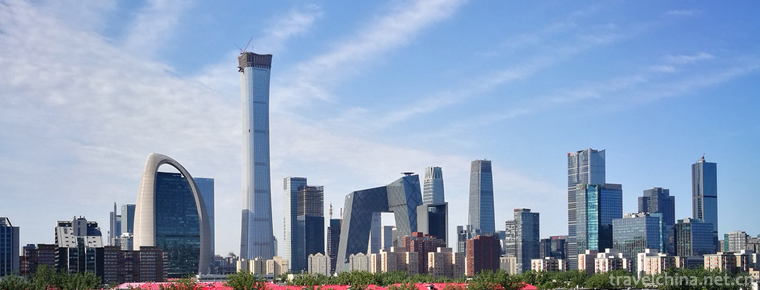
-
Old Summer PalaceYuanmingyuan
No. 28 Qinghua West Road, Haidian District, Beijing, China.
Views: 115 Time 2018-10-03 -
Zijin Mountain Scenic Area
Zhongshan Scenic Spot, or Zhongshan Scenic Spot for short, is located in Zijin Mountain, Xuanwu District, Nanjing City. It is a famous scenic spot in China.
Views: 154 Time 2018-12-06 -
World Dinosaur Valley
Lufeng World Dinosaur Valley is located 23 kilometers south of Lufeng County, Chuxiong Prefecture, at Ana Village Dinosaur Mountain, Chuanjie Township. It is situated beside Kunchu Expressway.
Views: 114 Time 2018-12-19 -
Fried Wudong with XO sauce
Ingredients: 2 packs of instant Wudong, 4 or 2 pieces of pork shreds (about 160g), 1/2 cups of onion shredded, celery shredded and carrot shredded, 1 egg, 4 tablespoons of XO sauce, 1 tablespoon of ra.
Views: 163 Time 2019-03-23 -
Baxian longevity noodles
Make it with Udonghua noodles. With turtle, old turtle boiled soup, turtle has a nourishing role, old turtle represents longevity. Take shrimp, squid, sea cucumber, black fish balls.
Views: 173 Time 2019-03-27 -
Mongolian Sawurden
Mongolian Sawurden, Xinjiang Uygur Autonomous Region and Jingxian traditional dance, one of the national intangible cultural heritage..
Views: 199 Time 2019-06-04 -
April Eighth Girls Day of Miao Nationality
"Girl's Day" originated in memory of Yang Bamei, a heroine. Legend has it that in the Northern Song Dynasty, Yang Wenguang, a famous general, was ordered to be plain and barbarous. After def.
Views: 198 Time 2019-06-05 -
Suqiao Flying Fork Club
Suqiao Flying Fork Club, also known as Yun Fork Club, is a local traditional acrobatics performance popular in Wen'an County, Hebei Province. The performances mainly consist of ancient forks, drums, c.
Views: 329 Time 2019-06-17 -
Xi Opera
Xiju opera, one of the national intangible cultural heritages, is popular along Shanghai and Nanjing, as well as in Hangzhou, Jiahu, Huzhou and urban and rural areas of southern Anhui..
Views: 139 Time 2019-07-01 -
Sho Dun Festival
The Shirton Festival is a traditional religious festival of Tibetan people in Tibet, Qinghai, Gansu, Sichuan, Yunnan and other provinces and regions. It is mostly held in early February, mid-April or .
Views: 167 Time 2019-07-09 -
Add another festival beside the word ants of the Zhuang nationality
The Zhuangs Ant Festival (insect word plus another) is mainly prevalent in the Hongshui River Basin in the northwest of Guangxi Zhuang Autonomous Region. It is named "Ant (insect word plus anothe.
Views: 178 Time 2019-08-16 -
Meishan cultural undertakings
By the end of 2019, there are 7 cultural centers, 131 cultural stations, 7 public libraries and 6 museums. By the end of the year, 558000 books were collected in public libraries. By the end of the year, there were 6 radio and television stations, and the total .
Views: 263 Time 2020-12-18

